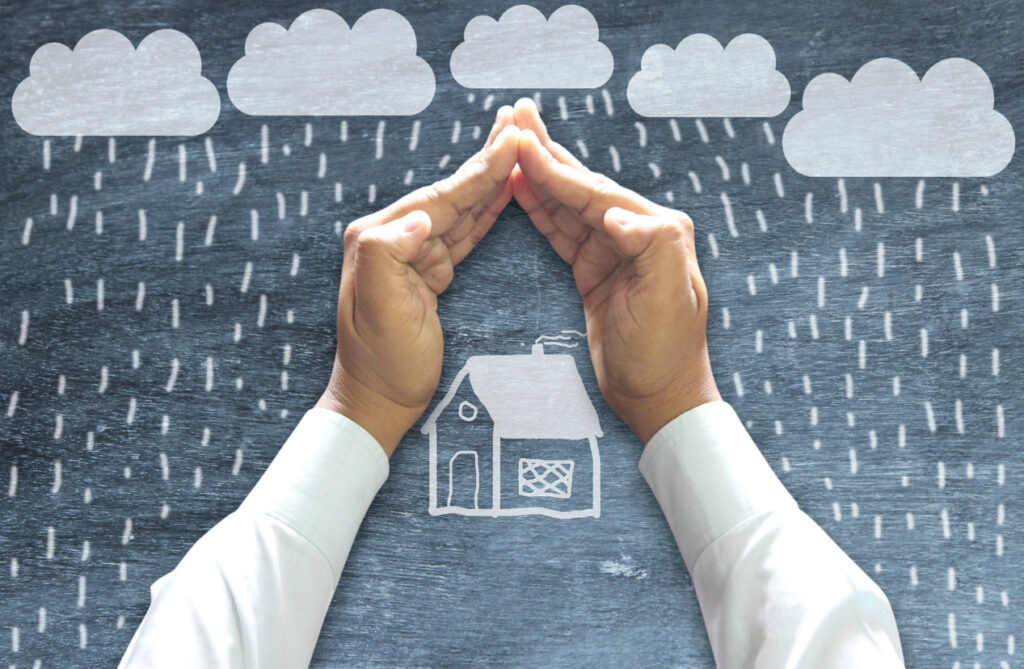What does Estimate for home insurance entails and how does the process work?
Let’s have a look at what it is all about.
In order to be able to estimate the cost of the home insurance you will need, you must look at two factors: Where you live and how much coverage you will need.
The average American can afford homeowners insurance, which costs about $109 per month, or $1,312 per year, for a policy covering up to $250,000 in dwellings.
According to Quadrant Information Services, these rates represent 142 insurance companies in 34,523 ZIP codes.
The main purpose of homeowners insurance is mainly to cover the financial burden of repairs or replacements if something fails on your property, your home, or your loved ones.
This coverage is an important part of every financial plan.
What is the cost of homeowners insurance?
In the United States, the average home insurance premium is $1,312 a year with a dwelling coverage of $250,000.
However, the premiums for home insurance policies vary depending on several factors.
One of the most significant factors is the location of the home.
Natural disasters are more likely in certain parts of the country, for example, and it may cost more to rebuild some buildings in these parts.
Based on the average rates for your state, the table below gives you a sense of how much you can reasonably expect to pay for a policy with a $250,000 dwelling coverage limit.
| State | Average annual premium | Average monthly premium | Percent of median household income spent |
|---|---|---|---|
| Alabama | $1,624 | $135 | 2.89% |
| Alaska | $1,040 | $87 | 1.33% |
| Arizona | $1,189 | $99 | 1.68% |
| Arkansas | $2,142 | $179 | 3.93% |
| California | $1,014 | $85 | 1.30% |
| Colorado | $1,659 | $138 | 2.29% |
| Connecticut | $1,184 | $99 | 1.36% |
| Delaware | $680 | $57 | 0.92% |
| Florida | $1,353 | $113 | 2.32% |
| Georgia | $1,376 | $115 | 2.43% |
| Hawaii | $376 | $31 | 0.43% |
| Idaho | $835 | $70 | 1.27% |
| Illinois | $1,322 | $110 | 1.78% |
| Indiana | $1,150 | $96 | 1.72% |
| Iowa | $1,289 | $107 | 1.95% |
| Kansas | $2,694 | $255 | 3.68% |
| Kentucky | $1,839 | $153 | 3.30% |
| Louisiana | $1,813 | $151 | 3.51% |
| Maine | $956 | $80 | 1.44% |
| Maryland | $1,124 | $94 | 1.18% |
| Massachusetts | $1,307 | $109 | 1.49% |
| Michigan | $1,120 | $93 | 1.75% |
| Minnesota | $1,785 | $149 | 2.19% |
| Mississippi | $1,773 | $148 | 3.96% |
| Missouri | $1,558 | $130 | 2.57% |
| Montana | $1,826 | $152 | 3.03% |
| Nebraska | $2,816 | $235 | 3.85% |
| Nevada | $822 | $69 | 1.16% |
| New Hampshire | $724 | $60 | 0.83% |
| New Jersey | $751 | $63 | 0.86% |
| New Mexico | $2,024 | $169 | 3.81% |
| New York | $987 | $82 | 1.37% |
| North Carolina | $1,295 | $108 | 2.12% |
| North Dakota | $1,841 | $153 | 2.63% |
| Ohio | $1,111 | $93 | 1.72% |
| Oklahoma | $3,519 | $293 | 5.92% |
| Oregon | $712 | $59 | 0.96% |
| Pennsylvania | $730 | $61 | 1.03% |
| Rhode Island | $1,193 | $99 | 1.70% |
| South Carolina | $1,142 | $95 | 1.84% |
| South Dakota | $1,917 | $160 | 2.98% |
| Tennessee | $1,625 | $135 | 2.87% |
| Texas | $1,863 | $155 | 2.76% |
| Utah | $647 | $54 | 0.77% |
| Vermont | $686 | $57 | 0.92% |
| Virginia | $1,013 | $84 | 1.25% |
| Washington | $863 | $72 | 1.05% |
| Washington, D.C. | $902 | $75 | 1.06% |
| West Virginia | $1,124 | $94 | 2.09% |
| Wisconsin | $986 | $82 | 1.46% |
| Wyoming | $805 | $67 | 1.24% |
State with the highest homeowner’s insurance costs

Oklahoma, Nebraska, Kansas, Arkansas, and New Mexico have the highest average annual home insurance premiums.
A home insurance cost is determined by a number of factors, including the potential for natural disasters.
| State | Average annual premium | Average monthly premium | Percent more than average |
|---|---|---|---|
| Oklahoma | $3,519 | $293 | 168% |
| Nebraska | $2,816 | $235 | 115% |
| Kansas | $2,694 | $225 | 105% |
| Arkansas | $2,142 | $179 | 63% |
| New Mexico | $2,024 | $169 | 54% |
There is a greater risk of widespread damage caused by hurricanes in states that border the Atlantic and Gulf coasts.
Due to the catastrophic damage caused by summer storms, states in “Tornado Alley” tend to have high insurance premiums.
Moreover, wildfires may be a threat in Western states, which can cause home destruction.
When choosing home insurance, knowing your state’s risks and ZIP code can be helpful.
Estimate for home insurance: The cheapest states for homeowners insurance
There are five states that have the least expensive average homeowners insurance premiums.
They are Hawaii, Utah, Delaware, Vermont, and Oregon.
In some of these states, the risk of natural disasters may be low, and the cost of living may be low, too.
In certain areas, you may find that construction materials and labor are less expensive, which would mean you would need less coverage for the repair or rebuilding of your house in case it catches fire.
A comparison of homeowners insurance costs by company
If you’re unsure whether the home insurance company you choose will affect the cost, ask yourself whether the choice really makes a difference.
We reviewed homeowners insurance providers and found that Erie Insurance was by far the cheapest insurance provider for $250,000 in dwelling coverage, followed closely by USAA and Nationwide.
The most expensive homeowners insurance company, according to our list of insurers, is Amica, followed closely by Farmers and Chubb.
Our evaluations of these providers included a look at market share, customer satisfaction, and coverage options.
The availability of all companies may not be the same in all states.
Average home insurance cost by coverage amount
A significant impact on your homeowner’s insurance costs will also come from how much dwelling coverage you purchase.
As a general rule, the fewer dwellings you cover, the cheaper your insurance will be.
We have provided the average annual premiums for five levels of dwelling coverage in the following table.
| Dwelling coverage limit | Average annual premium | Average monthly premium |
|---|---|---|
| $150,000 | $898 | $75 |
| $250,000 | $1,312 | $109 |
| $350,000 | $1,723 | $144 |
| $450,000 | $2,148 | $179 |
Estimate for home insurance : how to save money
The following tips can help you save money on homeowners insurance:
- Insurance policies can be bundled with one provider
- Shop around
- Take advantage of discounts
- Choosing the right coverage type
- Increase your deductible
- Improve your credit score
- A good agent can help you
- Make updates to your home
Frequently asked questions
Why did my home insurance go up?
There are many reasons why home insurance rates can change.
You will likely see a rise in your premium if you add an endorsement or increase your coverage limit.
When you renew your policy, your premium may increase if you file a claim during the term of the policy.
There is still a possibility that your home insurance costs will fluctuate, even if nothing has changed.
Can I lower my coverage to decrease my premium?
It’s possible, but it might not be the wisest investment.
You’ll likely see a decrease in your premium if you remove endorsements or lower your coverage limits.
The downside is that you may also have to pay out-of-pocket if you need to file a claim.
